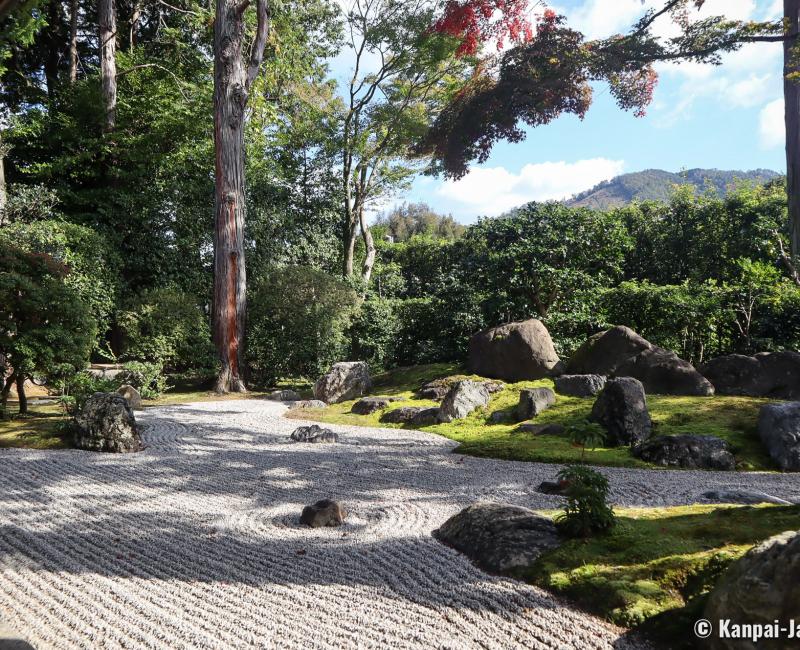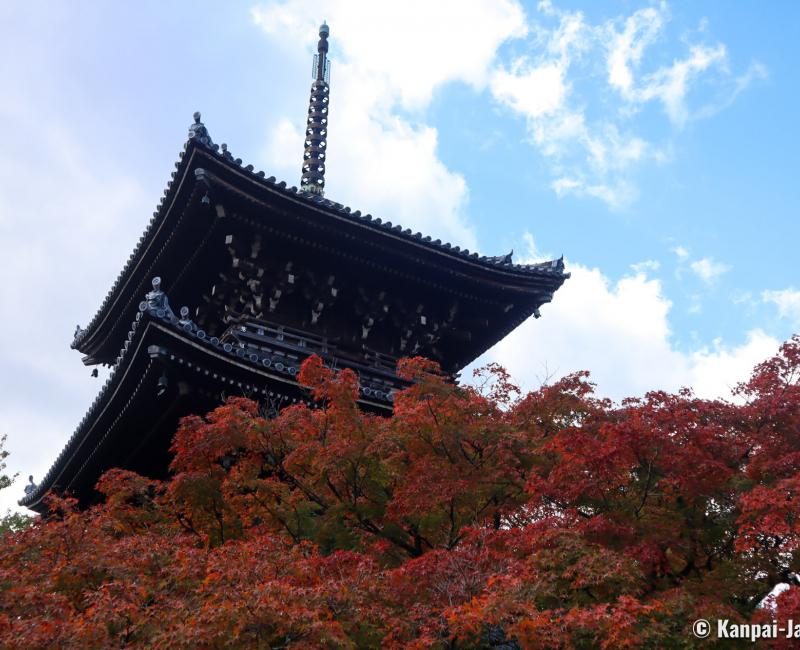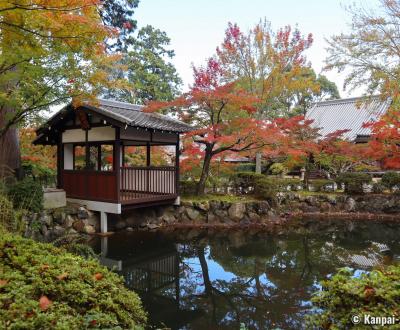Shinnyo-do
The True Temple of the Autumn Paradise
Shinnyo-do, officially named Shinshogokuraku-ji, is a Buddhist temple of the Tendai school located in the east of Kyoto. Unknown by tourists, this gem of a temple shelters an authentic Buddha Amida statue, several precious paintings and two dry gardens. Its outer enclosure is wonderful in autumn when the maple tree foliage turns red.
Shinshogokuraku-ji means "the true temple of paradise" and is commonly referred to as Shinnyo-do. It was founded in 984 by a prominent monk of Enryaku-ji, the head temple of the Tendai school in Japan, located on the sacred Mount Hiei. Shinnyo-do’s primary function was to shelter one of the oldest wooden statues of Amida Nyorai, called Unazuki no Amida, the nodding Amida. According to the legend, while achieving the statue, the monk-sculptor asked it about its calling. When asked to protect and save the town’s poor and women, the statue nodded three times to show its acceptance of the task. During Onin War (1467 - 1477), the sculpture was transferred in Otsu and in Mount Hiei to preserve it from destruction and was returned to Shinnyo-do in 1693.
Shinnyo-do is also popular for an ascetic version of Nenbutsu, which consists in praying for Buddha Amida’s help by chanting unrelentlessly his name. Monks often come to the temple to become acquainted with this practice. The chanting is also broadcasted throughout the temple’s grounds by speakers.

Spiritual treasures inside the temple
The tour starts by a paid inside visit of the temple, including the main hall Hondo and the view on the two dry gardens. Pictures of Buddha statues, paintings and draperies are forbidden to respect the place of worship. The main hall displays a generous decoration, among which the triad, with Amida Nyorai at its center, is remarkable. Then, the visit continues in another pavilion, the Shoin, characterized by its view on two interesting dry gardens:
- Nehan no niwa ("Nirvana Garden") evokes of the last moments of Shaka Nyorai (the historical Buddha). More precisely, the two larger stones symbolize Buddha’s lying body and the smaller ones are his disciples and the creatures living in the paradise. Moreover, the shakkei type garden borrows its background view to the Mounts Higashiyama.
- Zuien no niwa is a modern dry garden arranged in 2010, remarkable for the geometrical and very pictorial combination of stones, as well as the use of gravels of various colors.
It is possible to sit leisurely before each garden to immerse in the beauty of the sceneries.

The vibrant view on the maple trees in autumn
The exploration of Shinshogokuraku-ji continues outdoor, with a three-stories pagoda. A pleasant little alley, transformed into a colorful tunnel by the red maple trees in autumn 🍁, unfolds to the back of the temple’s grounds where are wooden buildings closed to the public as well as a graveyard. The walk is quiet, and one only encounter a couple of families and people walking their dogs or settling at the provided tables to enjoy an outdoor lunch.
Shinnyo-do temple is one of Kyoto’s memorable spiritual addresses. Its beauty, quietness, and contemplative atmosphere replenish the mind with beautiful soothing images and a new energy. We recommend walking there from one of the nearby popular tourist spots, such as Heian-jingu or the temples of the Philosopher’s Path.

